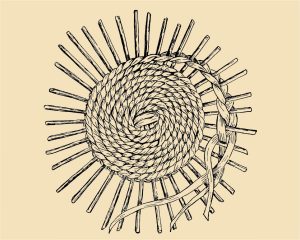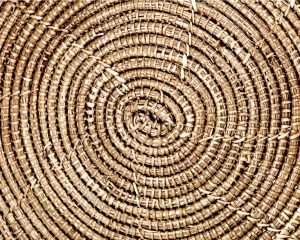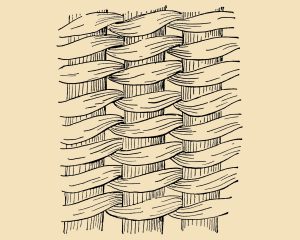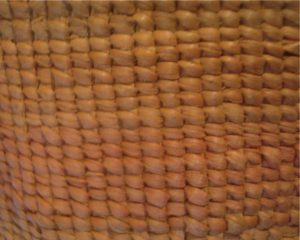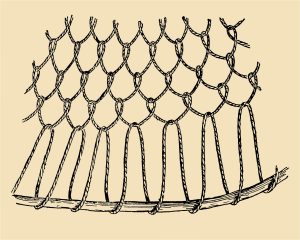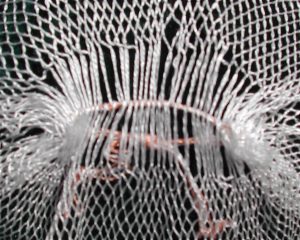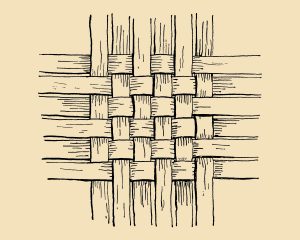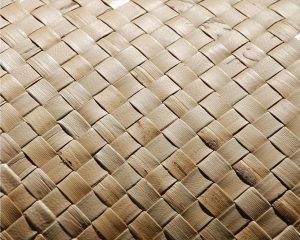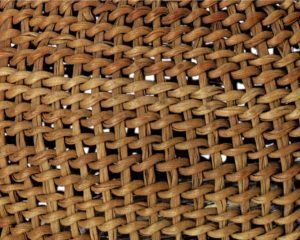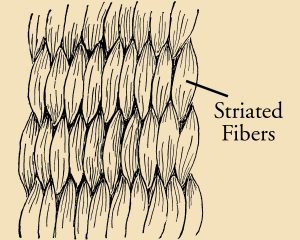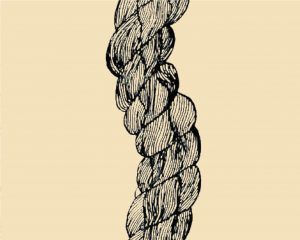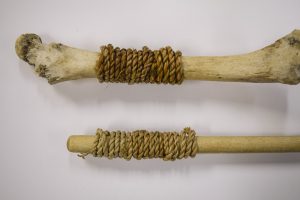PLANT-BASED MATERIAL CULTURE
IN NORTHEAST FLORIDA
by Vicki L. Rolland
Evidence of perishable fiber-built objects is preserved on the surfaces of this region’s prehistoric pottery. Fabric impressions, whether deliberate or accidental, reveal that native crafters utilized a variety of twilled, twined and knotted construction techniques. Widely- or tightly-spaced weaves or open-looped and knotted cordage nets could have functioned as transport/storage containers or for the capture of subsistence items.
Select any photo to view a larger image.
Coiled Spiral Base
Tightly Twined Basketry
Knotting Open Guage Netting
Simple Plaiting
Simple Open Twining
Tight Coiling Single Ply
RAW MATERIALS AND TOOLS
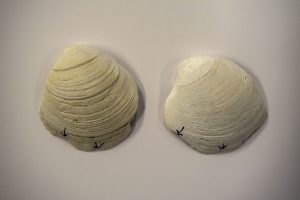
In this verdant environment, vines, grasses, palms, and estuarine rushes provided diverse materials that were utilized for rigid- or flexible-walled constructions. Reduced clam shells bearing spokeshave-like divots suggest service as fine-gauge hand tools used in the preparation of green media.
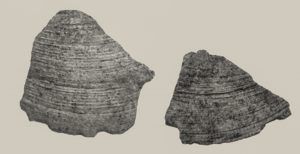
V-shaped indentions at the ends of halved long bones also suggest use as stripping or strand-evening implements. Twisted cordage impressions can measure as narrow as 1.5 mm and flatter twill strands as narrow as 4 mm.
PURPOSEFUL OR INCIDENTAL IMPRESSIONS
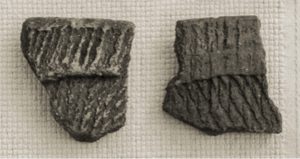
Employed as a visual marker of social membership, Ocmulgee (A.D. 900-1250) (A), and St. Marys (A.D. 1250-1500) (B), potters intentionally rolled cordage-wrapped dowels or bones over the surfaces of wet-clay pots. The impressions are continuous and not broken by paddle edges. To further identify their individual vessels, Ocmulgee potters used different cordage spacing, angles, and widths to finish appliquéd rim strips. Distinct appliqué depths also show a variety of styles. More uniformly built and decorated St. Marys vessels lack rim appliqués.
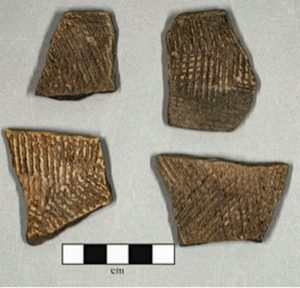
In contrast to intentional cordmarking, vague impressions found on vessel bases, appear on St. Johns and sand-tempered sherds. These impressions may be the result of building the vessel as it sat on a coiled-fiber base or placing a newly completed pot on a woven surface to dry. Though vague, measurable data and twist direction can still be recorded.
SOURCES
Ashley, Keith H. and Vicki L. Rolland. 2002, St. Marys Cordmarked Pottery: A Type Description. The Florida Anthropologist. Vol. 55(1):23-36.
Bolton. Lissant. 2011, Baskets and Belongings, Indigenous Australian Histories. The British Museum Press, London.
Hurley, William M. 1979, Cordage Identification of Impressions on Pottery. Prehistoric, Aldine Manuals on Archaeology 3, Taraxacum, Washington.
Minar, Jill. 1999, Impression Analysis of Cord-Marked Pottery, Learning Theory, and the Origins of the Alachua. Ph.D. dissertation, The University of California-Riverside.

